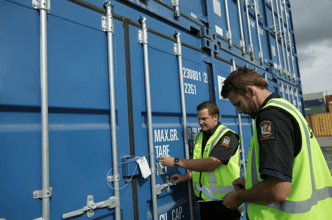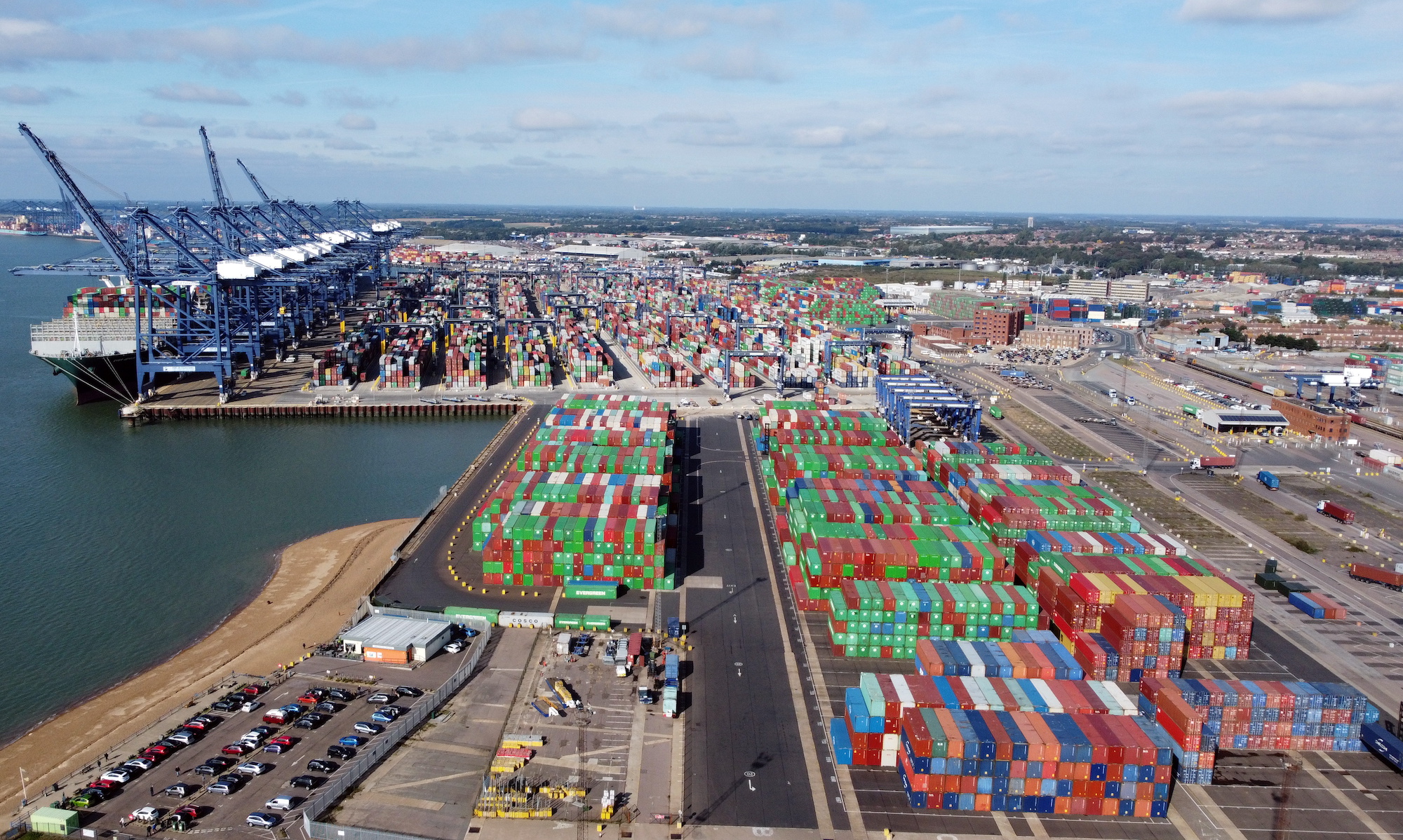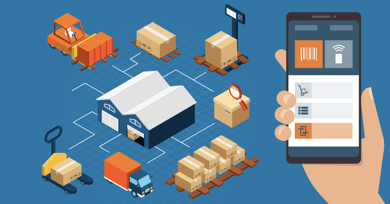The Challenges of Cross-Border Shipping and How to Avoid Them
Carrier Relations | Agency Ownership | Business Advice | Technology | Logistics | Transportation | Best Practices | Safety | Freight Management | Shippers
Cross-border shipping involves the movement of goods and products between countries. Companies participating in international trade can reach more customers, expand brand awareness, and drive revenue.
However, because the North American supply chain is intricate and complex, there are opportunities for mistakes, delays, and potential health or safety hazards during the exchange. Cross-border shippers often experience a wide range of challenges attempting to move products to customers. Fortunately, many of these challenges can be alleviated by working with a third-party logistics broker (3PL) experienced with the nuances of cross-border shipping.
This post will explore some of the common challenges shippers and carrier partners face when transporting goods across the border, along with solutions to avoid common pitfalls.
Common Challenges with Cross-Border Shipping
- Customs Compliance
North American countries place a high priority on the health and security of their citizens. Governments ensure public safety by establishing customs or regulations on products imported into their countries. Freight delays frequently occur when shippers are not aware of the customs regulations in their customer’s country.
In addition to what products can and cannot be imported, each country regulates the quality of imported products. Freight that does not comply with regulations will not be permitted to enter the country. For example, Canada has banned the import of many U.S. milk and dairy products because they contain rBST, a hormone that stimulates milk production in cows. If you are shipping goods that do not meet these regulations, you could be in violation of local laws.
- Insufficient Documentation
Customs guards often require documentation for shipments crossing the border to help identify goods. Having incomplete paperwork at the border can stall a shipment's progress. Customs guards will stop your shipment until the paperwork is completed and reviewed. These types of situations can add days to your delivery time.
Having the correct documentation beforehand makes the officer's job easier and prevents headaches for both the shipper and the carrier. If you are unfamiliar with the documents the shipment requires or need help filling them out, it is best to work with a customs broker.
- Tariffs
A tariff is a tax that countries charge businesses to sell products or services in that country. Tariffs are a challenge for shippers because countries often use tariffs as a political tactic to negotiate the best deal for their citizens and businesses. From 2016 to 2019, there was a threat of a trade war between the U.S., Canada, and Mexico. The United States–Mexico–Canada Agreement (USMCA) entered into force in 2020 to replace the North American Free Trade Agreement (NAFTA). USMCA significantly changed the processing and threats of tariffs, improving freight movement between these countries.
- Ineffective Brokers or Carriers
Freight crossing the border can be subject to cargo examinations. These inspections often add unwanted time to your delivery. While inspections may be unavoidable, an experienced customs broker will effectively coordinate with inspectors to secure a timely release of your freight, often within 24 to 48 hours.
Additionally, drivers should have a valid passport and be in good standing with the customs department. If the driver has a criminal record, previous border infractions, or a history of substance abuse, they may not be permitted to cross the border. By not vetting carriers sufficiently, you could be at risk of having customs authorities turn your load away. A reputable 3PL will prioritize carrier vetting and safety. Armstrong uses Carrier411 to help protect our customers from using unqualified, non-compliant, and unsafe carriers.
- Other Challenges
Recent events have amplified difficulties in cross-border shipping, including the increasingly tight capacity crunch, container shortage, and the declining numbers of truck drivers entering the industry. Additionally, the COVID-19 pandemic has raised concerns over truck driver health and safety. As demand remains sky-high and resources continue to be limited, transportation and cross-border shipping are especially challenging.

Tips for Avoiding Cross-Border Shipping Challenges
- Plan Ahead and Prepare
Cross-border shipments require planning and preparation, particularly for same-day shipments. One way to ensure success is to have the shipment properly packaged and labeled in the event your freight is selected for review. Adequate packaging will prevent authorities from delaying the shipment or even taking apart the shipment to get the information they need.
A standardized preparation process can help minimize unforeseen challenges while ensuring the greatest chance of success for same-day entry. It's best to give yourself as much lead time as possible, finding appropriate carriers and preparing your customs compliance paperwork in advance.
Customs compliance challenges create delays and unforeseen costs, negatively impacting client relationships and revenue. A strong operations team that is fully informed of the requirements and processes helps avoid these issues. It may be necessary to have a dedicated customs department or a customs broker specializing in regulations and compliance, preparing your route while reducing the chance of fines or stops.
- Diversify the Transport
In transportation, it is always best to expect the unexpected. Given that shipments often experience unanticipated challenges during transport, relying on only one mode of transportation can be risky. Although truckload and over-the-road transportation are predominant in North America, it may be advantageous to consider other modes like rail or air. Familiarize yourself with alternative entry points at the border in case of congestion or other challenges.
- Utilize TMS and Other Technology
There are several digital tools to improve load control and provide greater visibility in the cross-border supply chain. Having access to a robust Transportation Management System (TMS) can make all the difference. Our proprietary TMS, ATGFr8, and our customer portal connect all parties and enable shippers to make better decisions by providing tracking shipment solutions and paperwork consolidation.
This popular tool for logistics professionals provides an integrated and centralized supply chain management system. It can support shipping operations by tracking the movement of goods and inventory levels, assist with route contingency planning, and offer multimodal options in the event typically used modes are not viable. A TMS also provides real-time pricing and data reports to review past financial performance.
- Develop Strong Partnerships
Cross-border shipping requires significant collaboration and cooperation between operators on both sides of the border. Teams must work together to map out the route, understand the gaps, and proactively identify solutions to potential difficulties. Shippers and carrier partners should keep transparency and open dialogue at the forefront of their communications to enhance clarity, accomplish shipping goals, and address areas of concern.
By partnering with an experienced 3PL, shippers can shorten their supply chains, avoid unexpected challenges and delays at the border, and receive better shipment data. Additionally, a 3PL can serve as a single point of contact, eliminating the need to communicate with several partners and departments for multiple issues.
Streamline Your International Shipping Needs
Armstrong understands the nuances of cross-border shipping. We take the time to understand our customers' needs and deliver solutions aligned with them. Armstrong operates in Canada as Armstrong Forward Logistics, Inc., where we continue to build strong relationships with our Canadian partners and clients.
Our North American freight experts give shippers with cross-border operations access to a more seamless shipping experience. Partner with us to get your freight moved across the border safely and quickly.



